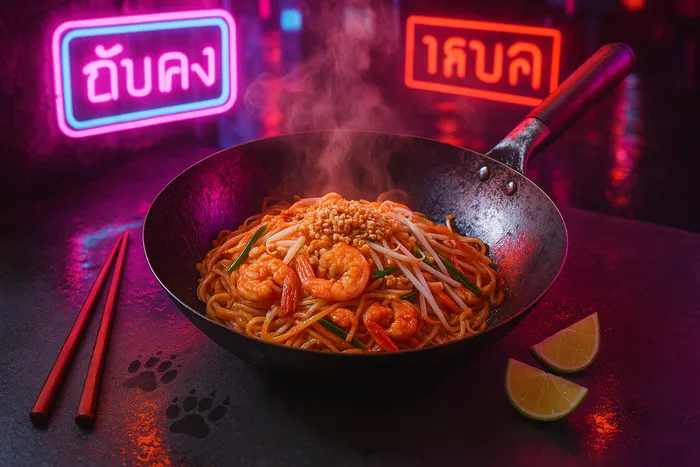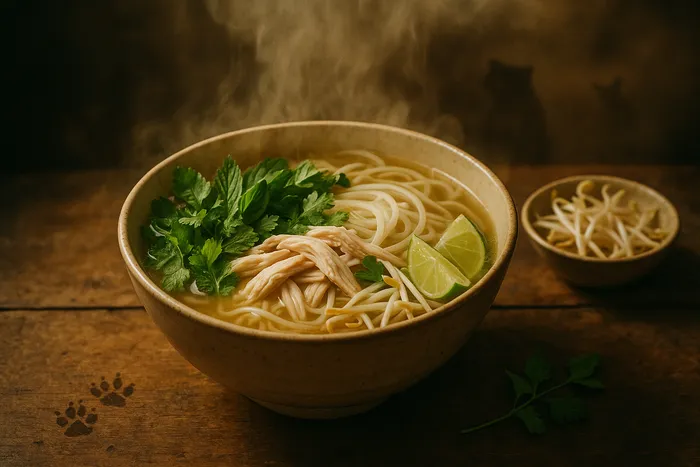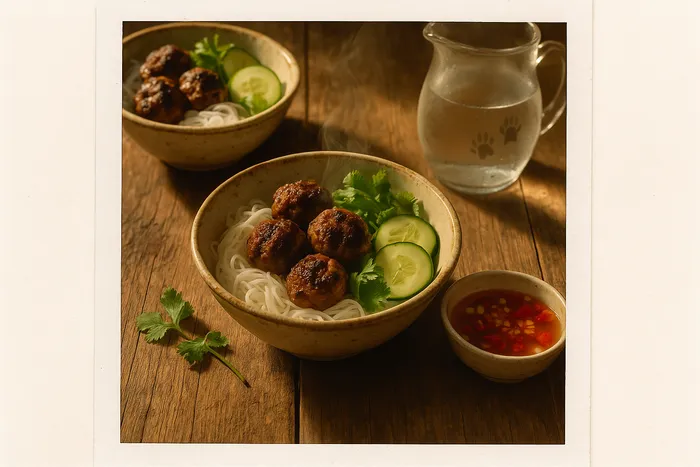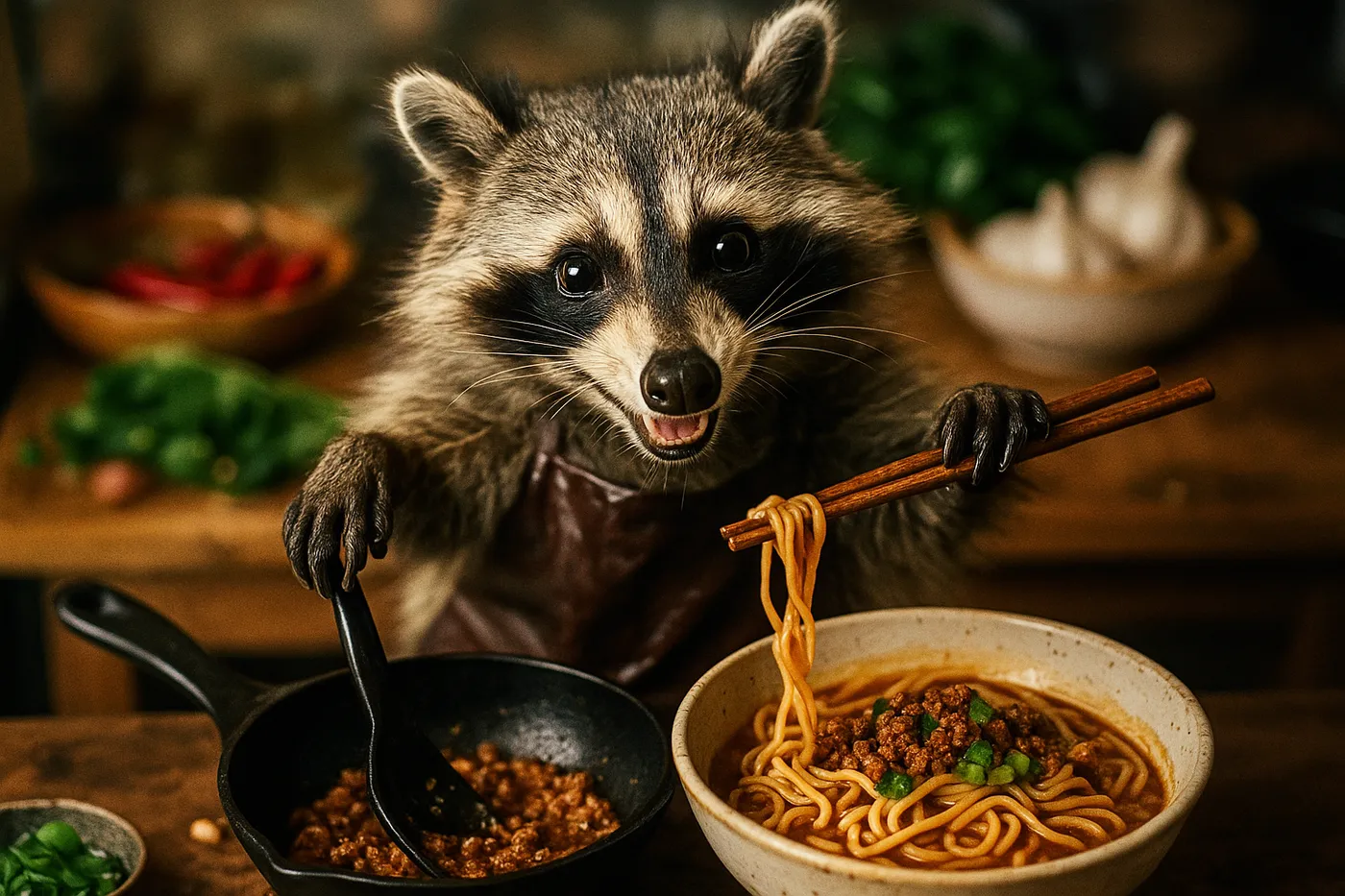
Found these at a delicious restaurant in Montreal's Chinatown and immediately knew I had to recreate them at home. The secret to proper dan dan noodles isn't the sauce—it's the rhythm. Toss too gently and the noodles stay naked; too aggressively and everything clumps.
Dan Dan noodles aren't a weeknight whim—they demand respect and planning. But the payoff is enormous: homemade chili oil, savory pork, complex sauce, and perfectly chewy noodles coming together in má là harmony.
Chili Oil
🌶️ 2 tablespoons Sichuan peppercorns
🍂 1 inch Chinese cinnamon stick (gui-pi)
⭐ 2 star anise
🫒 1 cup neutral oil
🔥 1/4 cup crushed red pepper flakes
Pork and Pickled Vegetables
🫒 3 teaspoons oil
🥩 8 oz ground pork
🍯 2 teaspoons sweet bean sauce or hoisin sauce
🍷 2 teaspoons Shaoxing wine
🥟 1 teaspoon dark soy sauce
✨ 1/2 teaspoon five spice powder
🥬 1/3 cup sui mi ya cai (pickled mustard greens)
Sauce
🥜 2 tablespoons sesame paste or tahini
🥟 3 tablespoons soy sauce
🍯 2 teaspoons sugar
✨ 1/4 teaspoon five spice powder
⚡ 1/2 teaspoon ground Sichuan peppercorns
🌶️ 1/2 cup of your homemade chili oil
🧄 2 cloves garlic, minced to a paste
💧 1/4 cup hot noodle cooking water
Noodles and Assembly
🍜 1 lb fresh or dried wheat noodles (medium thickness)
🥬 1 small bunch leafy greens (spinach, bok choy, or choy sum)
🥜 Chopped roasted peanuts for garnish
🧅 Chopped scallions (optional but recommended)
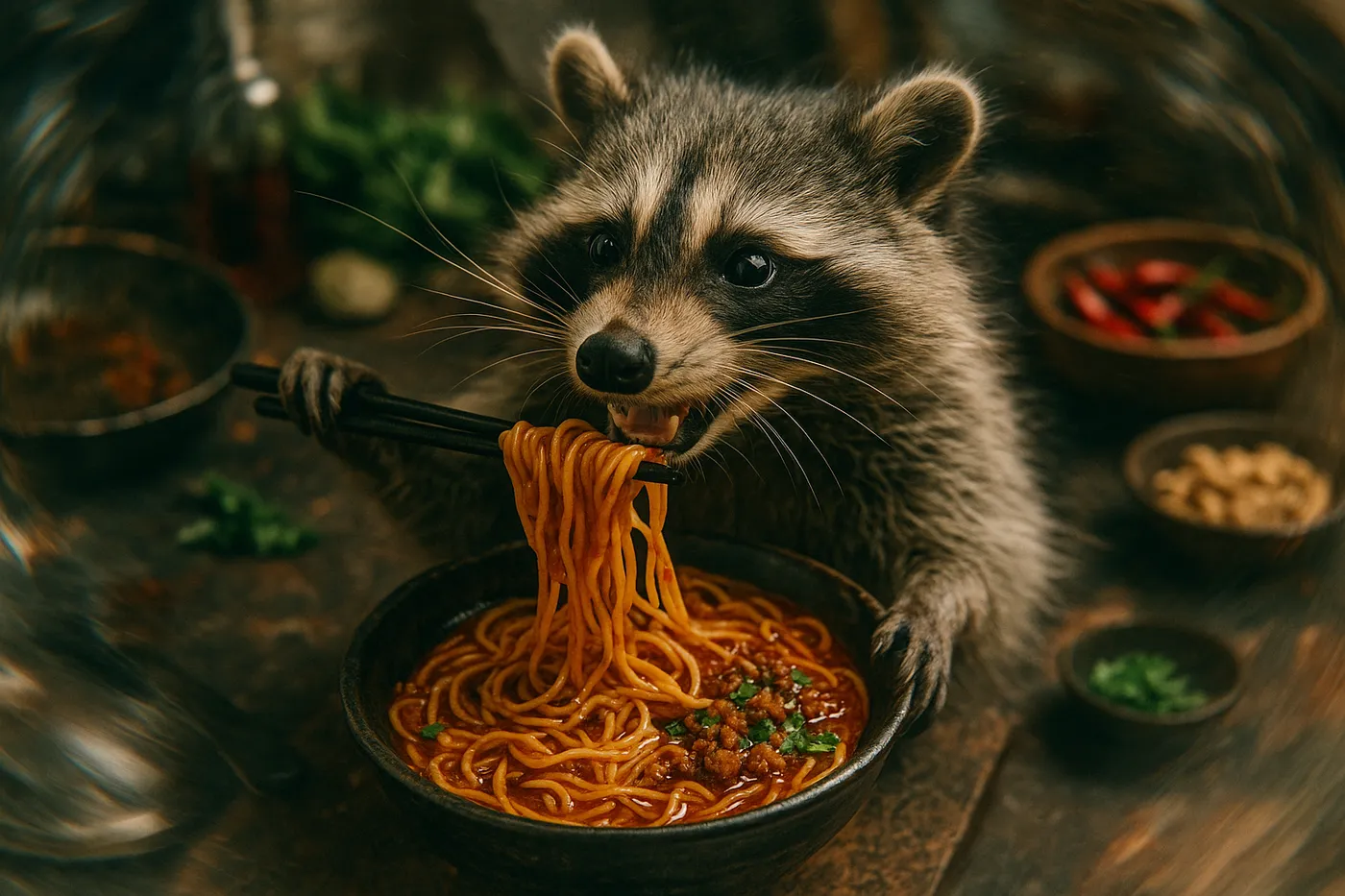
Instructions
Make the chili oil. Combine the Sichuan peppercorns, cinnamon, star anise, and oil in a small pot. Heat gently to 325°F over medium-low heat, then turn off the heat. Wait 6-7 minutes, then remove the aromatics with a slotted spoon. Add the red pepper flakes and let them steep until fragrant. Let it cool completely and store in a glass jar in the fridge. This makes more than needed—store the extra for future use.
Prepare the pork mixture. Heat 1 teaspoon of oil in a wok over medium heat and brown the ground pork. Add the sweet bean sauce, Shaoxing wine, dark soy sauce, and five spice powder. Cook until all liquid evaporates and the pork is glossy. Set aside. Heat the remaining 2 teaspoons of oil in the same wok and sauté the pickled mustard greens for a few minutes until fragrant. Set aside.
Make the sauce. Whisk together the sesame paste, soy sauce, sugar, five spice powder, ground Sichuan peppercorns, chili oil, and garlic until smooth. Use hot noodle cooking water to loosen the sauce to desired consistency. Taste and adjust seasoning.
Assemble the dish. Cook noodles according to package directions. Before draining, blanch the greens in the noodle water for 1 minute, then drain both.
Divide the sauce among serving bowls. Add the noodles, then the greens. Top with the pork mixture and pickled vegetables. Garnish with chopped peanuts and scallions. Mix everything together until noodles are well coated.
Dan Dan Noodle Assembly Flow
Critical Timing:
- Chili oil needs time to infuse - don't rush
- Pork must cook until liquid evaporates for proper texture
- Use hot noodle water immediately for sauce consistency
- Mix vigorously at end to coat every strand
Serving & Remix Ideas
This serves 6 as a generous portion, or 4 if you're really hungry (no judgment here). The beauty of Dan Dan noodles is in the customization—dial up the chili oil if you're feeling brave, add extra Sichuan peppercorns if you want more numbing action, or toss in some extra vegetables if you're feeling virtuous.
I've also made this with ground chicken when pork wasn't available, and with almond butter instead of sesame paste in a pinch. Both worked beautifully. The key is that layered complexity—sweet, salty, spicy, numbing, and rich all at once.
A Little Cultural Context
Dan Dan noodles originated in Chengdu, Sichuan province, named after the bamboo carrying poles (dan dan) that street vendors used to hawk their noodles. It's street food elevated to an art form, and like most great street food, it's designed to be eaten quickly while it's hot. The traditional version is often served without much liquid—more like a "dry" noodle dish where every strand gets coated in that incredible sauce.
Sichuan Flavor Profile Balance
Flavor Balance Notes:
- Má & Là: The signature Sichuan duo - numbing and spicy working together
- Sesame Foundation: Rich base that carries and mellows the heat
- Umami Depth: Pickled vegetables and soy add complexity beyond just heat
- Temperature Contrast: Hot noodles, warm sauce, cool garnishes
What I love most about this dish is how it perfectly embodies the Sichuan philosophy of flavor: it's not just about heat, but about the interplay of different sensations. The má (numbing) from the Sichuan peppercorns, the là (spicy) from the chilies, the richness from sesame, the umami from fermented ingredients—it's like a symphony in your mouth where every note matters.
Inspired by the recipe I gound on the thewoksoflife blog, adapted for curious trash pandas everywhere.





